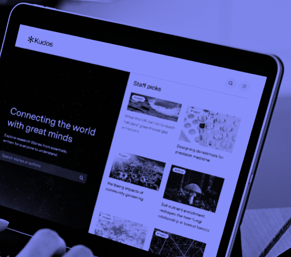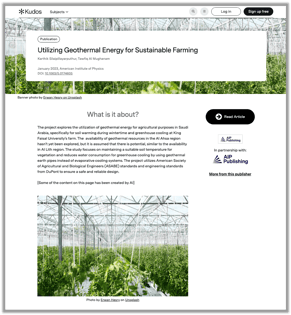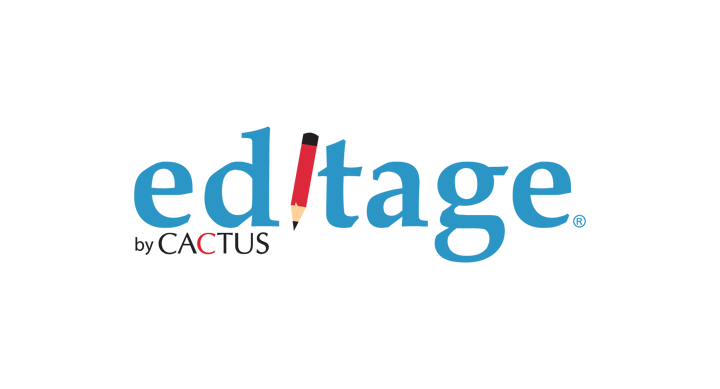We recently began using AI to generate plain language summaries of research publications. It’s an exciting development that saves authors time, and gives publishers and institutions more visibility, because we can now create so much more content for you, much more quickly. Plain language summaries increase reach, readership and impact – AI helps us quickly respond to information needs and trends by creating clusters of relevant summaries on hot topics.
Generative AI
 Generative AI is a type of artificial intelligence that “writes” new text using algorithms that predict what the next word in a sentence should be. Generative AI bases the text it writes on huge databases of text known as “large language models”. It has been used in many ways – for news articles, blog posts, and social media updates; even for creating graphics, logos, and websites. Generative AI lends itself particularly well to summarizing content (rather than creating it from scratch), saving ‘human’ time and enabling rapid scaling because it can digest substantial quantities of content much more quickly.
Generative AI is a type of artificial intelligence that “writes” new text using algorithms that predict what the next word in a sentence should be. Generative AI bases the text it writes on huge databases of text known as “large language models”. It has been used in many ways – for news articles, blog posts, and social media updates; even for creating graphics, logos, and websites. Generative AI lends itself particularly well to summarizing content (rather than creating it from scratch), saving ‘human’ time and enabling rapid scaling because it can digest substantial quantities of content much more quickly.
Prompt engineering
 The quality and accuracy of AI-generated content has often been challenged, and attention has moved quickly onto how you refine and improve the material that is generated. A big part of this is what is known as “prompt engineering”. This means tweaking the questions you ask generative AI, or the instructions you give it, to keep reworking its output until it meets your criteria.
The quality and accuracy of AI-generated content has often been challenged, and attention has moved quickly onto how you refine and improve the material that is generated. A big part of this is what is known as “prompt engineering”. This means tweaking the questions you ask generative AI, or the instructions you give it, to keep reworking its output until it meets your criteria.
For us at Kudos, we had a head start with generative AI: we have over 10 years’ experience in testing and refining the structure of plain language summaries. This means we already knew how to refine the prompts we were using to generate AI summaries. For example, various studies show the importance of simplified titles, and the effects of these on search engine rankings and citations. So we were able to instruct our generative AI to create a plain language title of a certain character length, structure, tone of voice, quality and readability.
Structure and length
 We also know the ideal lengths of plain language summaries, and that a good way to structure these is to have them answer questions; Google and other search engines look for content that answers questions – so it makes sense for us to guide our authors, and now our AI, to structure summaries in that way. We use the prompts “What is it about?” and “Why is it important?” when guiding authors how to write a plain language summary of their research. We can use the same basic prompts with AI, whilst also specifying how many words we want. Finally, we often ask for very specific text to be generated, for example, key takeaways or recommendations derived from the research being summarized. This helps us meet our goal of communicating research in ways that makes it as relevant and actionable as possible for broad audiences who want to know not only “what is known in this area” but also “what does that mean for my own attitudes and behaviours”.
We also know the ideal lengths of plain language summaries, and that a good way to structure these is to have them answer questions; Google and other search engines look for content that answers questions – so it makes sense for us to guide our authors, and now our AI, to structure summaries in that way. We use the prompts “What is it about?” and “Why is it important?” when guiding authors how to write a plain language summary of their research. We can use the same basic prompts with AI, whilst also specifying how many words we want. Finally, we often ask for very specific text to be generated, for example, key takeaways or recommendations derived from the research being summarized. This helps us meet our goal of communicating research in ways that makes it as relevant and actionable as possible for broad audiences who want to know not only “what is known in this area” but also “what does that mean for my own attitudes and behaviours”.
Readability
 One of the most difficult aspects of generative AI and prompt engineering is readability. This means a number of things: using plain language – which can take a number of stages of refinement. Even machines seem to suffer from “prestige verbiage” syndrome – I’m joking, of course, and falling into the common trap of treating the machine like a human; remember that generative AI is literally just guessing the next word based on what it has most commonly found in its source data. That source data is based on existing content written by researchers in academic or technical language, so it’s no surprise the AI also defaults to this kind of formal, scholarly language. It takes careful prompt engineering, with very specifically phrased instructions to the AI, to generate summaries that are truly plain language. At Kudos we have spent years calibrating different levels of plain language, and guiding authors, editors and now AI to write in a way that can be understood by people who may not be specialists in the field.
One of the most difficult aspects of generative AI and prompt engineering is readability. This means a number of things: using plain language – which can take a number of stages of refinement. Even machines seem to suffer from “prestige verbiage” syndrome – I’m joking, of course, and falling into the common trap of treating the machine like a human; remember that generative AI is literally just guessing the next word based on what it has most commonly found in its source data. That source data is based on existing content written by researchers in academic or technical language, so it’s no surprise the AI also defaults to this kind of formal, scholarly language. It takes careful prompt engineering, with very specifically phrased instructions to the AI, to generate summaries that are truly plain language. At Kudos we have spent years calibrating different levels of plain language, and guiding authors, editors and now AI to write in a way that can be understood by people who may not be specialists in the field.
Tone of voice
 Another important aspect of readability is tone of voice. It seems to be a common quirk of generative AI that it writes like a 14-year-old student writing a school essay, often including attempted witticisms. Training your AI to get the tone right is another area that requires lots of refinement. We set clear expectations and provide it with examples of the tone and level of summary we want it to generate. For example, you can ask generative AI to phrase its content in an authoritative way - objective, informative, and avoiding jargon. You can copy in paragraphs you have written yourself to give it a sense of what to aim for. You can ask it to regenerate the same content over and over – “give this a more educational style”, “give this a more serious tone”.
Another important aspect of readability is tone of voice. It seems to be a common quirk of generative AI that it writes like a 14-year-old student writing a school essay, often including attempted witticisms. Training your AI to get the tone right is another area that requires lots of refinement. We set clear expectations and provide it with examples of the tone and level of summary we want it to generate. For example, you can ask generative AI to phrase its content in an authoritative way - objective, informative, and avoiding jargon. You can copy in paragraphs you have written yourself to give it a sense of what to aim for. You can ask it to regenerate the same content over and over – “give this a more educational style”, “give this a more serious tone”.
Refinement and moderation
 Our platform is perfectly set up to provide researchers, authors, publishers, institutions and others with a collaborative interface where they can edit, amend and enhance the summaries we generate with AI. We have well-designed user interfaces for people to moderate their summaries, select illustrative images, add a quote, and connect up related materials like infographics, videos or data. The AI generated summaries are clearly labelled as such.
Our platform is perfectly set up to provide researchers, authors, publishers, institutions and others with a collaborative interface where they can edit, amend and enhance the summaries we generate with AI. We have well-designed user interfaces for people to moderate their summaries, select illustrative images, add a quote, and connect up related materials like infographics, videos or data. The AI generated summaries are clearly labelled as such.
Read an example of an AI-generated summary on Kudos:
Utilizing Geothermal Energy for Sustainable Farming
Dissemination – content is nothing without an audience
 Last but very much not least! Perhaps the most important point here is what you do with AI generated content. You need a platform to host and disseminate it, and an audience to read and benefit from it. Again, Kudos has a head start having been providing a beautiful platform and building an influential research community, for over 10 years. We present summaries in magazine style ‘Story’ pages and Showcases, and provide research communication tools to help manage promotion of these pages – and a range of web and scholarly metrics, from views and altmetrics to citations, to help measure results.
Last but very much not least! Perhaps the most important point here is what you do with AI generated content. You need a platform to host and disseminate it, and an audience to read and benefit from it. Again, Kudos has a head start having been providing a beautiful platform and building an influential research community, for over 10 years. We present summaries in magazine style ‘Story’ pages and Showcases, and provide research communication tools to help manage promotion of these pages – and a range of web and scholarly metrics, from views and altmetrics to citations, to help measure results.
In conclusion
We have used 10 years’ experience of research communication to generate high quality AI summaries, and can now quickly create a bedrock of reliable, well explained research in any topic area. Most importantly, we have the platform and the skills to make sure this content is found, read, understood and acted on by the broadest possible audience – and to provide the data that shows that this is happening.
Find out how Kudos can help you leverage AI to summarize and showcase your publications.


